In January 2002, the American Concrete Institute (ACI) issued a new standard, ACI355.2-01, which prescribed a comprehensive testing program to ascertain design parameters for post-installed adhesive anchors and/or mechanical anchors used in cracked or uncracked concrete.
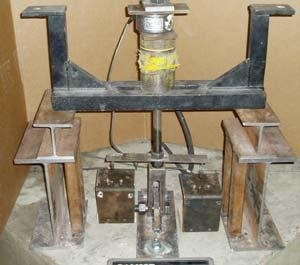
Static Tension
ACI355.2 is intended to complement ACI318 Appendix D, which addresses cast-in-place concrete anchors. ACI318 is the Building Code Requirements for Structural Concrete, which is adopted by reference in the International Building Code. AC193 and AC308 are promulgated by the ICC Evaluation Service (ICC-ES) to establish requirements to satisfy the requirements of the International Building Code with respect to concrete anchors.
In June 2005, the ICC-ES approved the new acceptance criteria for concrete anchors, AC193 (based on ACI355.2 with changes), and also approved AC308. AC193 is acceptance criteria for evaluating the performance of mechanical and screw anchors in cracked or uncracked concrete. This criteria references ACI355.2 and complements or modifies the test program it describes to address the provisions of the building code.
AC308 is acceptance criteria for evaluating the performance of post-installed adhesive anchor systems in cracked or uncracked concrete. This document has similarities to ACI355.2; however, there are many differences that apply entirely to the nuances of adhesive anchors.
These criteria replace, for application to concrete, the previous criteria used by ICC-ES in evaluating concrete anchor products under the 2000 International Building Codes as well as the legacy codes. These include AC01 (for mechanical anchors), AC58 (adhesive anchors) and AC106 (screw anchors).
New Criteria for Cracked Concrete Testing
The new criteria differ from the former criteria in several ways. In general, the two main differences are the requirements for testing in cracked concrete and the importance of demonstrating reliability in adverse installation conditions.
Testing for Anchors in Cracked Concrete
Concrete cracking can occur for a variety of reasons, including load, shrinkage, creep, temperature and/or settlement, as well as stresses induced by seismic activity. Studies have shown that where such cracks occur, they tend to propagate through concrete anchor locations. Further studies have shown that these cracks significantly affect the performance of the anchors. Building codes now require structural anchor design to address the effects of cracks on the anchors. Therefore, anchors must be evaluated to provide the design data required by the structural designer.
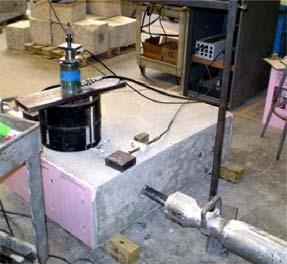
Static Crack Apparatus
The Purpose of Reliability Testing
In former criteria, anchors were tested more or less to establish an allowable load. The new requirements establish a design load, but also demonstrate to what degree the anchor can achieve the design loads even if installed or used in adverse conditions. Anchors that do not perform reliably are either unqualified, or will have reduction factors applied to their design loads.
Differences in Anchor Testings
In the past, anchors were tested in various strengths of concrete to establish allowable loads in the different strengths. In the new program, anchors are tested only in "low strength" and "high strength" concrete. Instead of a series of allowable loads, a single "design load" is established, along with reliability factors for each anchor diameter, for both a shallow and deep embedment. In addition, accredited independent testing and evaluation laboratories must conduct testing in conformance to AC193 or AC308, and evaluate the test results to establish the required design parameters for the anchors.
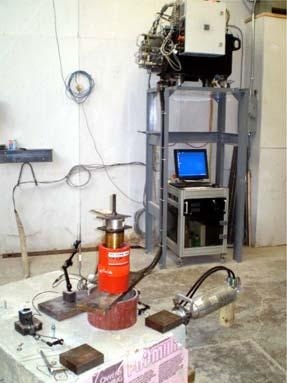
Different Types of Cracked Concrete Testings
There are essentially two types of cracked concrete tests: static-crack and moving-crack. In static-crack testing, the anchor is tested in the crack while the crack is held to a specified width. In moving-crack testing, the anchor is tested in a crack which is cycled between two widths.
Element engineers first create a hairline cracked in the concrete member using an established method. Then, they drill a hole perpendicular to the surface of the concrete member, effectively bisecting the crack, and thereby positioning the axis of the anchor in the plane of the crack. An anchor is installed and set pursuant to the manufacturer's instructions (as modified by the criteria). The subsequent testing is conducted as follows:
For static crack tests: The crack is opened to a specified width (either 0.012 or 0.020 inch) and held. Then the anchors is tested in tension or shear, while the crack width is monitored.
For moving crack tests: The crack width is cycled between two widths, starting with 0.004 and 0.012 inch, while a static load is applied to the anchor. The crack is cycled one thousand times while any resulting displacement of the loaded anchor is recorded. After the cycling is completed, the crack is held static, and the anchor is pulled to failure.
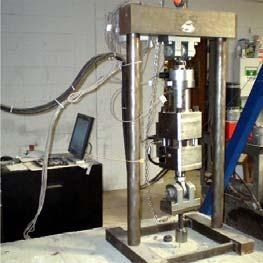
"Adverse" Conditions For Different Types of Anchors
The adverse conditions will vary depending on the type of the anchor, and in some cases, the preferences of the manufacturer. For mechanical anchors, the adverse conditions include drill holes at maximum tolerance or minimum tolerance and at lower installation torque (where applicable). For adhesive anchors, the adverse conditions include installation in saturated concrete, submerged in water, etc. In addition, testing for effects of freeze-thaw, sustained load and installation direction are commonly required.
Alternative Testings for Different Types of Anchors
For adhesive anchors, the additional tests may include seismic tension and shear, cold installation, minimum cure times, elevated temperature, resistance to alkalinity or sulfur, as well as testing to establish minimum edge distance, minimum spacing and critical edge distance.
For mechanical anchors, including screw anchor, the additional tests may include seismic tension and shear and tests to establish minimum edge distance, minimum spacing and critical edge distance.
For screw anchors only, other tests are required to address embrittlement and installation methods.
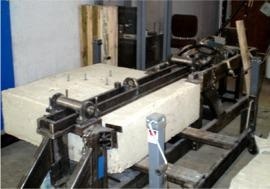
Complying with the New Criteria
All concrete anchor evaluation reports issued by ICC-ES after January 1, 2006 must comply to the new criteria. Also, existing reports for mechanical anchors (except screw anchors) have been cancelled. Existing reports for screw and adhesive anchors are no longer valid after January 1, 2008. To renew or replace cancelled or invalid reports, the anchors must be re-evaluated to the new criteria.
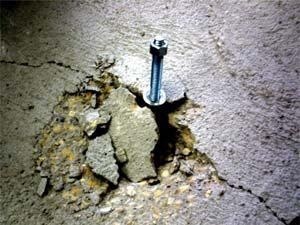
Element Twin City Testing Service for AC193 and AC308
The International Accreditation Service (IAS) has accredited Element Twin City Testing for testing anchors to AC193 and AC308 for testing in uncracked and statically cracked concrete and virtually all reliability and service condition testing. Element TCT achieved accreditation for the Moving Crack test, seismic tension and seismic shear tests, and the "Method A" embrittlement test in early 2008. Element TCT is equipped to conduct all manner of environ-mental testing that is required for adhesive anchors and torque-controlled adhesive anchor systems, and has metallurgical and chemical testing capability that enables the required assessment of the anchor systems.

This information has been sourced, reviewed and adapted from materials provided by Element Materials Technology.
For more information on this source, please visit Element Materials Technology.